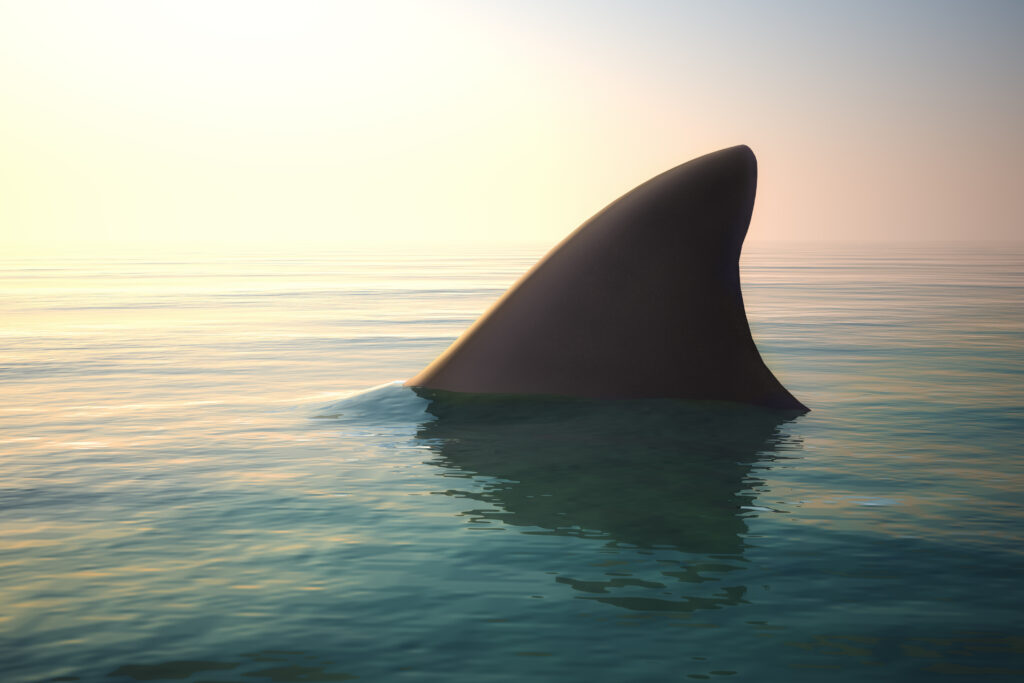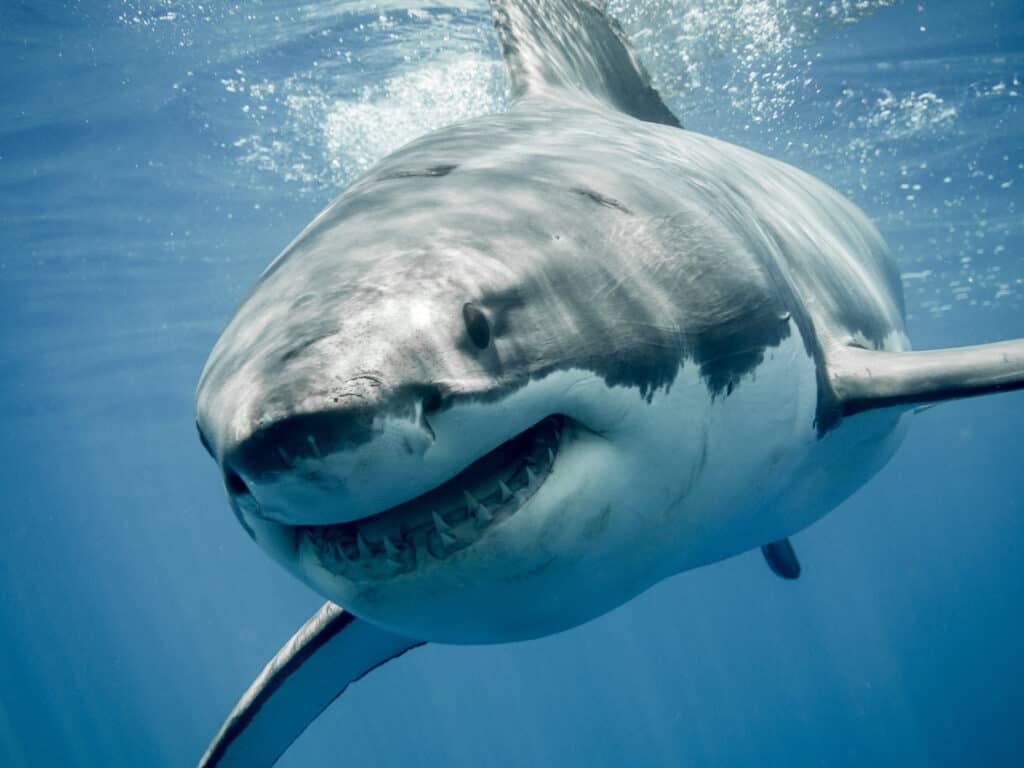A 1,000-pound great white shark is currently swimming off the coast of North Carolina’s outer banks. The shark, named Miss Costa by OCEARCH, has been in North Carolina waters since February 22, 2023, when it showed up just south of the Virginia/North Carolina border. Tracking data shows Miss Costa’s latest location off the Outer Banks on February 26, 2023.
OCEARCH
This shark is one of many tracked by OCEARCH, a global non-profit organization that studies and works to conserve the ocean’s sharks. These predators are vital to keeping the ocean’s ecosystem healthy and balanced.
OCEARCH tags and tracks sharks all over the world. Miss Costa was tagged on September 23, 2016, off the coast of Nantucket, Massachusetts. She was named after Costa Sunglasses in honor of their partnership with OCEARCH to protect sharks. No doubt a few researchers were wearing Costas on the day Miss Costa was tagged!
At her tagging, Miss Costa was a sub-adult great white shark measuring 12 feet 2 inches long and weighing 1,001 pounds. More than six years later, this shark is surely becoming massive, but it will also become a whole lot bigger in the future. A mature female great white shark can weigh close to 2,400 pounds.
Since her tagging, Miss Costa has traveled 26,579 miles. Her most recent tracking pings reveal she has traveled 60 miles in just the last three days.

OCEARCH exists to protect the ocean’s apex predator: the great white shark.
©iStock.com/DigtialStorm
Tracking Sharks
When OCEARCH tags a shark, a small transmitter is attached to the shark near the dorsal fin. The tagging does not hurt the shark. At most, it may be a momentary minor discomfort, similar to a person receiving a flu shot. The transmitter does not affect the natural behaviors of the shark in any way.
For a tagged shark to be located, the shark must cruise at the surface of the water for 90 seconds or longer. When the transmitter rises above the water’s surface, it sends data to OCEARCH researchers. If the shark remains at the surface for a minute and a half, it allows the transmitter to send three pings. Those three pings are what enable researchers to pinpoint the shark’s location.
If a shark submerges before three pings can be sent, researchers document a Z-ping. A Z-ping shows that the shark is still swimming and surfacing, but it doesn’t provide enough data for geolocation.

OCEARCH tracks great white sharks all over the globe.
©Ramon Carretero/Shutterstock.com
Miss Costa’s Travels
Since 2016, Miss Costa hasn’t traveled any further north than her tagging location in Massachusetts. She has traveled as far south as the coast of Cuba and has ventured west in the Gulf of Mexico, almost reaching the Alabama/Florida Panhandle border.
But Miss Costa’s most frequently visited waters are where she can be found right now. She is most often found off the coasts of North and South Carolina and Virginia. Clearly, Miss Costa likes to travel. But, as we all know, there’s no place like home.
The photo featured at the top of this post is © iStock.com/Martin Heyn
Thank you for reading! Have some feedback for us? Contact the AZ Animals editorial team.






